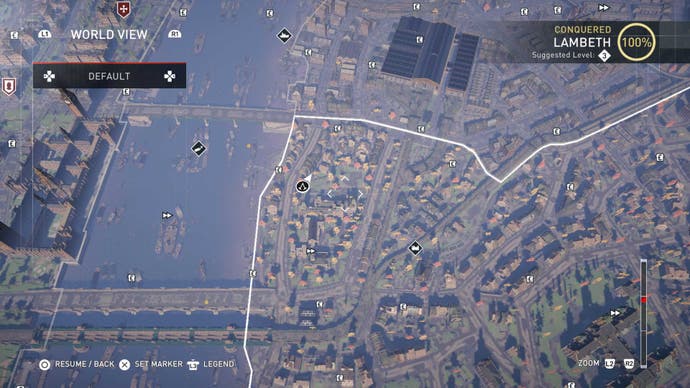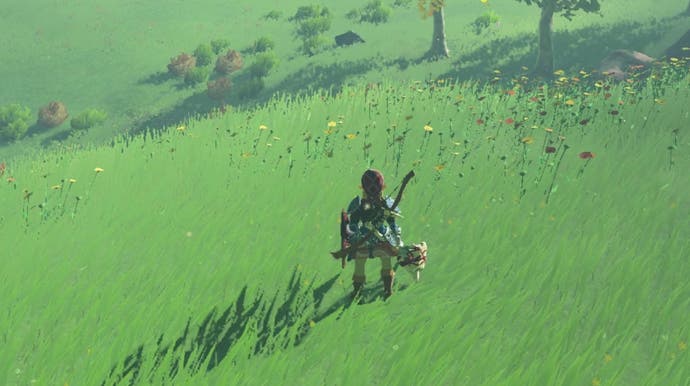At the Games Accessibility Conference, 2018
Notes from Paris.
A shift is occurring in the games industry. It's called the Accessibility Revolution. The awareness and application of accessibility in games has grown exponentially. Developers around the world are making long overdue ventures into this hidden field to create an inclusive sanctuary in which everybody is able to play the games they want to play.
The GA Conference EU 2018, held in Paris on the 22nd of October, brought passionate disabled gamers together with developers to discuss the present and the future state of accessibility. The first two GA Conferences had been held in the US. The shift to Paris for 2018 allowed speakers who couldn't make it across the Atlantic a chance to shine a light on the good work being done in Europe. I couldn't wait to go and see it all for myself.
Accessibility is gaining traction in every part of the gaming industry, so developers are attending in order to keep up with best practices. The 2018 conference featured valuable educational talks covering a whole range of topics - some were eye-opening even for me as a disabled gamer. I'm not alone. Developers need to be open to change or new ideas so that they can design accessibility features with the proper knowledge, to fully connect with the idea of making the industry a more inclusive space.
There were a lot of great sessions. Mark Friend, a senior researcher at Sony, gave a talk that explored how PlayStation in Europe promotes accessibility and incorporates it in games. But he was there to listen as well as talk. "It's also great meeting gamers with disabilities," he said, "hearing their stories, and getting a deeper understanding about what challenges they face."

As Friend suggested, when it comes to games, it's important to think deeply about all forms of disability. I never realised the challenges faced by colour-blind gamers until Douglas Pennant, the associate development manager at Creative Assembly, spoke about the often-invisible problem of designing games to take into account colour-blindness. It's impossible for someone without colour-blindness to detect these sorts of issues during gameplay design, so it's a tricky challenge to overcome.
Similarly, Jamie Knight, a senior research engineer at the BBC, explored gaming through an autistic lens. His talk on cognitive accessibility explored options that can aid players in receiving, processing and acting on information in a game world that has too much cognitive stimuli. Open-world games with millions of icons can be overwhelming. Games like Zelda Breath of the Wild, meanwhile, provide a vast world that you can explore at your own speed.
The panel titled, Empower Us! Including Players with Mobility Disabilities was chaired by the inclusion advocate Cherry Thompson, and I took part in the discussion. Gaming with a mobility disability had never been covered before, so having the platform to talk about experiences with the panel and answer questions from developers truly was empowering. We all agreed that including tools for remapping buttons in games should become standard, along with developers listening to feedback and consulting with disabled gamers during development. "The next step goes way beyond providing a list of options to bypass inaccessible mechanics," said David Tisserand, Ubisoft's accessibility project manager "Accessibility needs to be a key part of the creative process & include disability representation in video games." Thinking realistically on this point, there's still a lot of education needed for the industry to get the basics right.
Elsewhere, Meagan Marie, the senior community manager from Crystal Dynamics, offered a passionate exploration of the history of accessibility threaded throughout the Tomb Raider franchise. This in-depth overview illustrated how Shadow of the Tomb Raider's focus on player choice resulted in the franchise's most accessible game to date.

Good accessibility design lurks in surprising places. The ability to explore Croft Manor in the earliest trilogy was a genius example of environmental storytelling, a safe playground reflecting Lara's personality. Exploration not only had practical usage, but the mansion went beyond the detail needed for a simple tutorial, it had the added benefit of unintentional accessibility. I personally loved searching for the secrets hidden in Lara's house: this combat-free zone still allowed players to feel like a Tomb Raider without missing out on other gameplay elements.
The sheer range of talks was a testament to what GA Conf is trying to achieve, bringing together everyone from triple-A developers to solo indie developers, all with the aim of making games that everyone can enjoy. Ian Hamilton, one of the foremost accessibility specialists in the industry, highlighted just how important it is for people to not only think about accessibility in games but get together and start a proper discussion. "Community building is a really essential part of advocacy work," he explained. "The amount of good that can come from you spending 30 seconds preaching is really incomparable to the amount of good that can come from spending 30 seconds introducing people to each other. It's through those connections that efforts multiply."
The life of an inclusion advocate can become quite isolating, but as Hamilton said, "A common story we get is of people leaving the events feeling re-energised and re-enthused."

